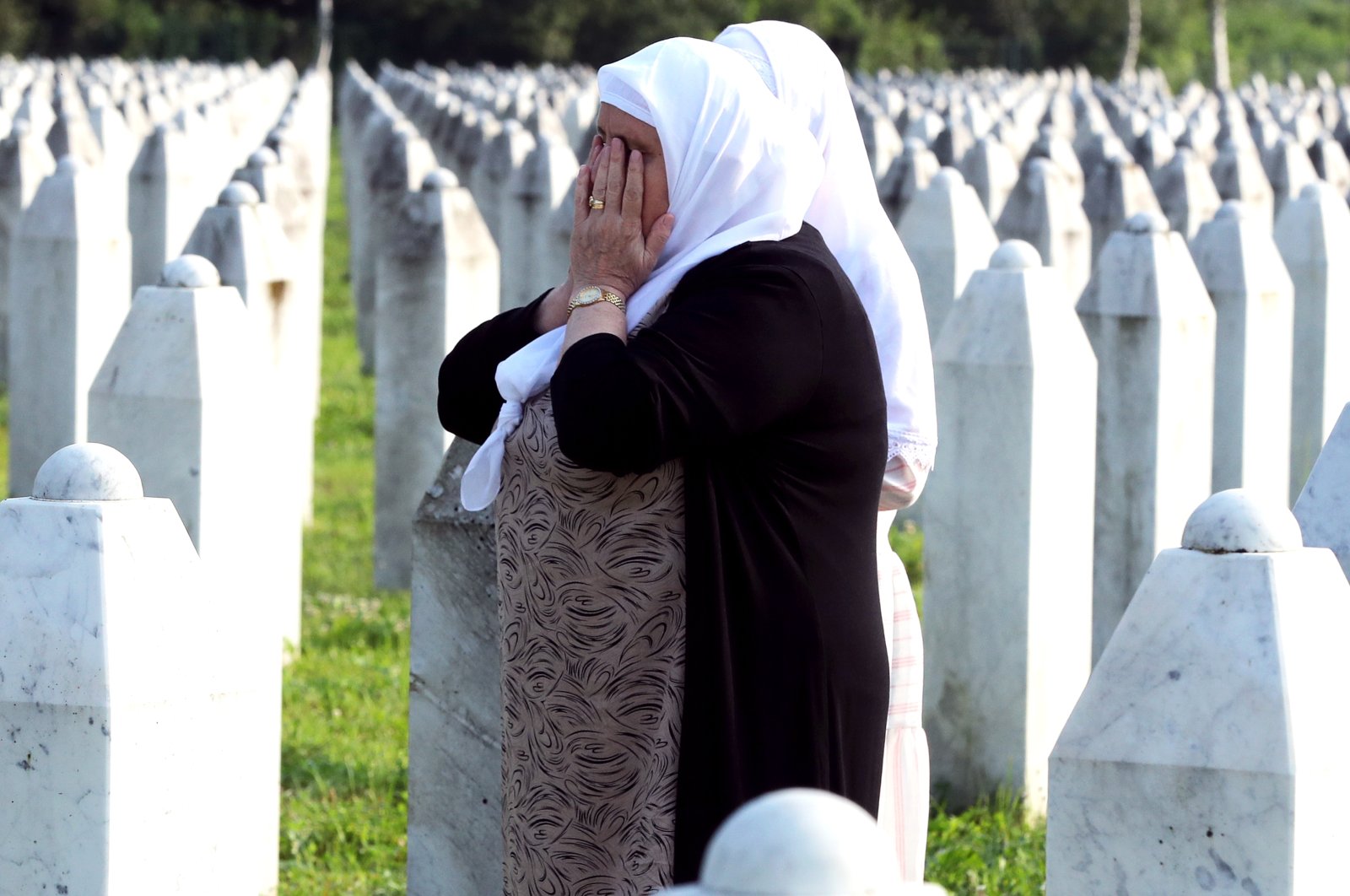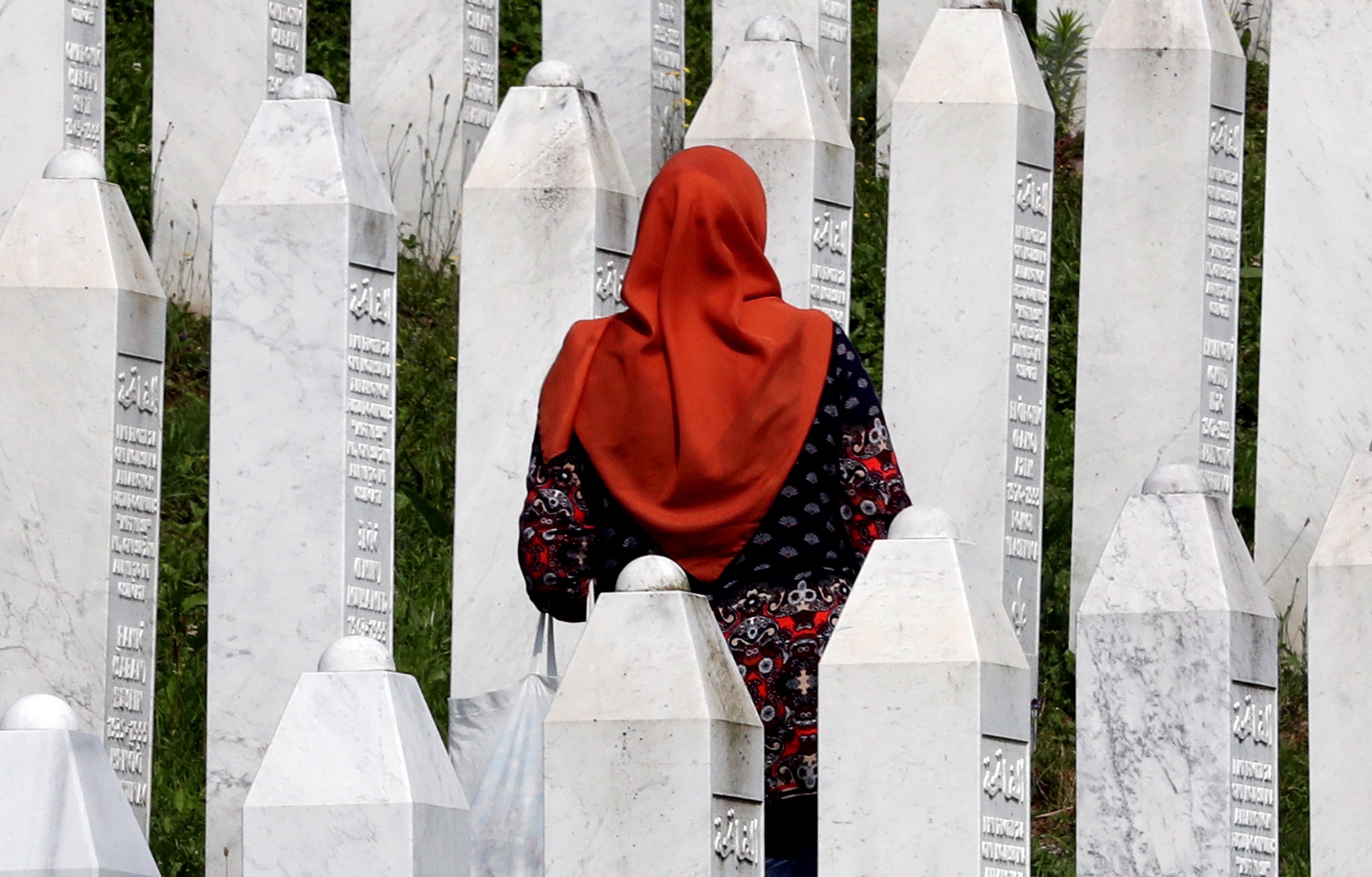
This year, the Srebrenica Genocide is being remembered on its 28th anniversary, with 2,000 victims yet to be identified. The ideological roots of this genocide go way back and are ingrained in history
The Srebrenica genocide was a brutality that matched or even exceeded the level of persecution Jews suffered at the hands of the Nazis during World War II but was still not recognized as "genocide" around the world. It took place under the watchful eyes of Europe, which is claimed to be the "Center of Civilization" in the world, at a time that stood on the edge of the second millennium.
Contrary to popular belief, this atrocity does not consist of a single massacre, and it is not only the "Srebrenica Genocide," which took place 28 years ago. The Bosnian War, which occurred between 1992-1995, started when Bosnia-Herzegovina’s move to declare its independence with a referendum on Feb. 29, 1992, was rejected by both local Serbs and Serbia itself.
Although it is called the war between Serbs, Croats, Slovenes and Bosniaks, it is actually the nightmarish story of the brutality and atrocities aimed at pointless revenge by an oppressor with unlimited attack power against an oppressed party that had nothing to defend itself with; rather than the actual war in Bosnia at that time.
As a matter of fact, although "Srebrenica,” where the most losses of lives occurred, is remembered today, there were many more "refugee camps” that were in fact "slaughterhouses” – namely Visegrad, Foça, Tomashitsa, Vlasenitsa, Omarska and Tronoplye. Atrocities have been committed that inflicted wounds in the soul of a nation that will never heal.
In these "death camps" where torture prevailed, thousands of Bosnian men, regardless of age, were murdered and thousands of Bosnian women, regardless of age, were sold into slavery and raped. Considering the experiences, of course, it is not correct to draw a comparison between atrocities, but the policy – of killing and destroying a nation to achieve a purpose not different from what the Nazis did in Auschwitz and other camps to not only kill a nation but also toying with its honor, dignity and future as well – is noteworthy.
One of the most painful and embarrassing aspects of the genocide and atrocities that took place in the unbalanced and immoral war that lasted for about four years is undoubtedly the fact that Dutch soldiers sent to Srebrenica by the United Nations as Peace Forces played ostrich.

The first of those answers came from Slobodan Milosevic, the president of the Socialist Republic of Serbia of the time, who shouted, "No one will attempt to oppress you again!” in front of about 1 million Serbs gathered near the Monument to Prince Lazar on June 28, 1989, in Gazimestan on the Kosovo plain.
The second answer was from Zeljko Raznatovic, more commonly known as "Arkan," who embarked on massacres against Bosnians with the paramilitary unit he formed in the Bosnian War during a historical rally that a few hundred people attended. During the rally, he exclaimed, "For 500 years we were under your rule. And now, for 500 years, you will be under our rule."
The dates, places, historical figures and, of course, the allusions in the speeches at the two rallies direct us to a single point.
First Battle of Kosovo in 1389 and subsequent Ottoman rule
Milosevic's speech is meant to convey a message. On the plain of Kosovo, where the battle took place, Gazimestan is the place where the graves of the Turks who were martyred in the war are located. Moreover, the Mashhad-i Hüdavendigar Tomb, where the innards of Sultan Murad I, who was martyred in the war were buried, is a few kilometers away from there. Prince Lazar was the commander-in-chief of the Serbian army who died in the battle. June 28, 1989, was the 600th Anniversary of the battle, hence the inscription "1389-1989” was written on the monument.
The remarks, "No one will attempt to oppress you again!” and "For 500 years we were under your rule. And now, for 500 years, you will be under our rule" are clearly references to the Ottoman domination that started after the First Battle of Kosovo and its aftermath.
Here, we see one of the most perfect examples of the importance and significance of a day in the mind of a nation. June 28, the day when the First Battle of Kosovo began, became the most important day for the national identity of the Serbian nation.
So much so that on this day, which was declared the Day of Vidovdan (St. Vitus) and given sacred importance, Serbs declared war on the Ottoman Empire in 1876.
In 1914, Serbian nationalist Gavrilo Princip killed the Austro-Hungarian Archduke Franz Ferdinand in Sarajevo, which led to World War I. In 1921, the Vidovdan Constitution was adopted in the Assembly of the Serbo-Croatian-Slovenian Kingdom.
The neo-Serbian national identity, the foundation of which was laid with the First Battle of Kosovo and shaped in the center of Turkish (Islamic - Ottoman) hostility and emerged with the nationalism movement, found it unpalatable that they were yet to have their own nation-state during the reigns of the Kingdom of Serbs-Croats-Slovenes, which was established by European states after World War I, its successor Kingdom of Yugoslavia and the Socialist Federal Republic of Yugoslavia, which emerged in the bipolar world after World War II.
After the death of Josip Broz Tito in 1980, during the disintegration of Socialist Yugoslavia, Serbs tried to have the biggest share of the cake, exposing their energy that had been suppressed for many years. Of course, their biggest rivals in the struggle for a share of the pie were the Croats, and then the Slovenes. However, there was a fourth: Bosnians, the westernmost standard-bearers of Islam.
According to Serbs, owing to their hostility toward the Turkish-Islamic culture, which is the basis of their national identity, destroying the descendants of the Turks in the region, namely the Bosnians who they see as Turks, would both serve their political ambitions and avenge the First Battle of Kosovo in 1389. Naturally, the fate of Bosnians at this point is one of the most unlucky that history has ever witnessed.
The indigenous people of Bosnia, which was conquered by Mehmed the Conqueror at intervals after 1389, and definitively in 1463, subsequently became Muslim and assumed a new religious and national identity.
Bosnians, who were the most loyal assistants of the Ottomans in the Balkans, especially during the Ascension and Pause period, rose to important positions in the state both militarily and in terms of administration. However, in 1683, after the second Vienna defeat, their fortunes turned upside down like the Ottomans, and amid the nationalist movement, this nation, which was seen as "Turkish" because of their beliefs rather than ethnicity, was treated as an undesirable nation by regional nations and administrations.
Issue of Bosniak 'Turkishness'
In fact, the Bosniak "Turkishness” is valid to a point. Because when you visit Bosnia-Herzegovina and its most important cities, it will be clearly evident that this is a country built by the Ottomans. Moreover, its capital, Sarajevo, is a Turkish-Islamic capital as can be understood from its name and construction. "Saraj” in its name means "palace,” which implies the fact that it was the administrative center of Bosnia-Herzegovina.
Since the people learned Islamic rites from the Turks, many words in daily life, especially religion and culture, are essentially loanwords from Ottoman Turkish. In addition, many things in daily and social life, especially attire, came from Turkish culture. This is why Bosnia and Bosnians were targets of all Christian states in the vicinity after the second Vienna Defeat, and they were repeatedly attacked and subjected to destruction, massacres and plunder.
The origins of Bosnians became a subject of debate over the years as well. A Croatian named Matija Mazuranic, an Illyrian nationalist supported by Austria-Hungary, entered Bosnia secretly in 1839-40, collecting information about the region and the people and subsequently reporting it.
According to data, Bosnians are ethnically similar to the local people, but they are Turkish in terms of culture, lifestyle and belief.
This is why the first moves of Gen. Josip Filipovic, the commander-in-chief of the imperial army, who entered Sarajevo after Bosnia was handed over to the Austro-Hungarian Empire at the Berlin Peace Conference in 1878, were to close the public schools providing Turkish education and to impose a ban on publications in Turkish. Because language plays a crucial part in determining one’s nationality and identity.
Even though increasing pressures, prohibitions and atrocities after the occupation caused some migrations to the Ottoman lands, Muslim Bosnians did not abandon their faith or their lands.
The atrocities continued during the reign of the Serbo-Croat-Slovene kingdom, which was established after World War I. So much so that Bosnians, one of the main ethnic elements of the country, were not included as part of the state and, of course, in its administrative structure.
This exclusion continued during the era of the Kingdom of Yugoslavia and the Socialist Federal Republic of Yugoslavia. The undesirable nation of the region, the Bosnians, migrated to some European countries, albeit occasionally to Türkiye, during these periods. As a matter of fact, the policy of extermination targeting Bosnians after the collapse of Yugoslavia is a situation with a historical background. However, despite all the atrocities and humiliations suffered, the Bosnians, under the leadership of Alija Izetbegovic, defeated Serbian oppression and ended their atrocities. Thanks to the Dayton Agreement signed on Dec. 14, 1995, they made their presence known to the whole world, especially to the Serbs.
However, this level of acceptance is not enough. The important step to uphold the memories of Bosnians killed in the Bosnian War, especially with the "Srebrenica Genocide," which was carried out with the murder of Bosniak men in Srebrenica by reprehensible genociders 28 years ago under the leadership of Ratko Mladic, is that Bosnians retain their national identity, including their language, beliefs and culture, fight and struggle for Bosnia without forgetting what was done. As the late Alija Izetbegovic put it: "Because the forgotten genocide is repeated.”
Finally, unfortunately, the identities of the bodies in the mass graves could not be determined at one time, as Serbs held the lands containing the mass graves in the region. Thus, they had naturally hoped the traces of the deceased Bosnians in them would disappear as well as evidence of the genocide.
For this reason, martyrs, whose identities have been recently determined by DNA analysis, are being reburied in the Potocari Memorial Cemetery after a funeral prayer on July 11 every year. Another 30 victims of the genocide, the youngest 15-year-old Elvir Salcinovic and the eldest 65-year-old Nezir Muminovic, who were identified on the 28th anniversary, were also buried this year.
In the Srebrenica Genocide, in which 8,732 Bosniak men were martyred, the number of martyrs identified in the Potocari Memorial Cemetery has increased to 6,751 after the latest 30 people were identified this year.
In other words, the identities of approximately 2,000 more people are yet to be determined.
